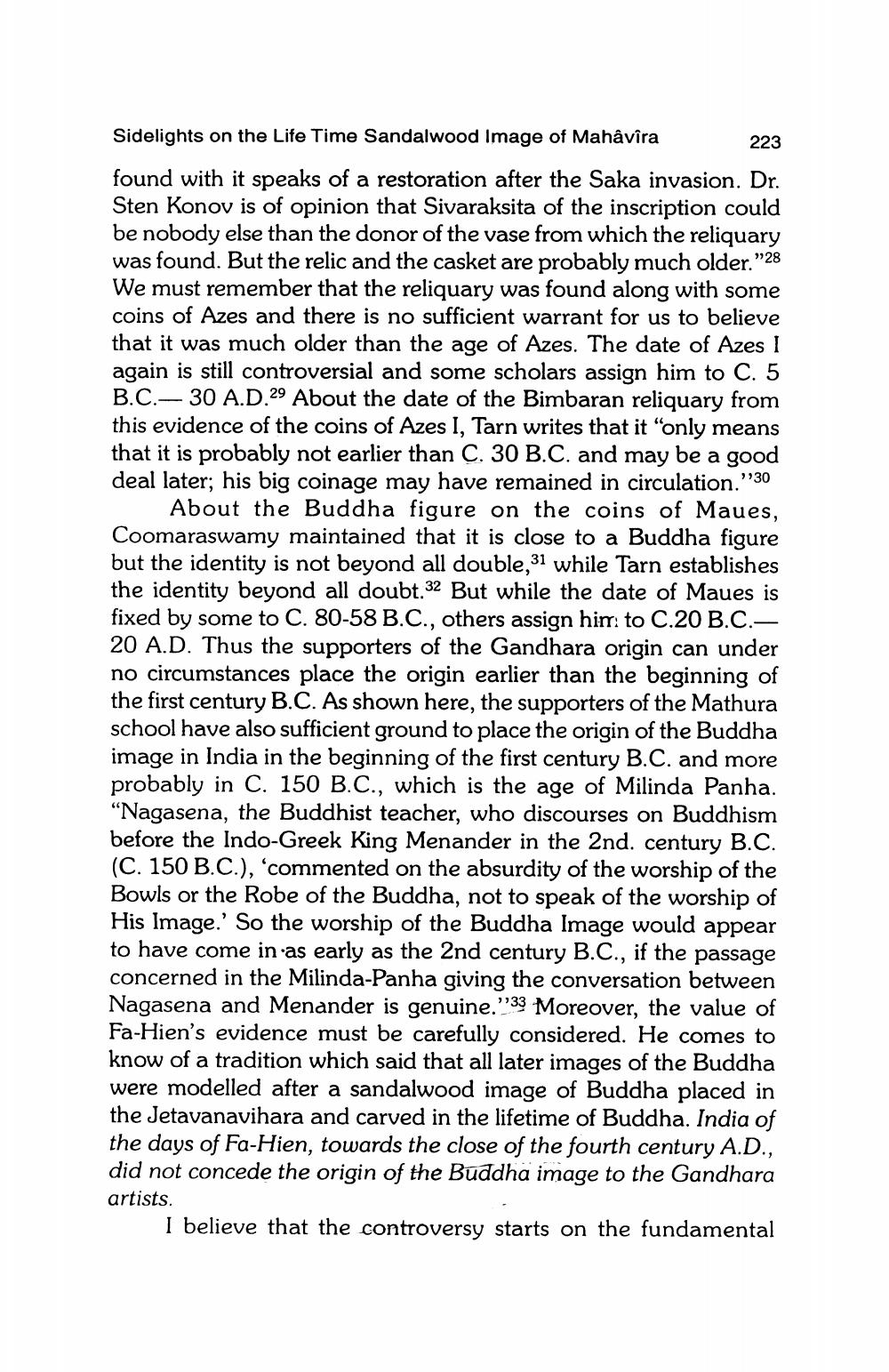________________
Sidelights on the Life Time Sandalwood Image of Mahâvîra
223
found with it speaks of a restoration after the Saka invasion. Dr. Sten Konov is of opinion that Sivaraksita of the inscription could be nobody else than the donor of the vase from which the reliquary was found. But the relic and the casket are probably much older."28 We must remember that the reliquary was found along with some coins of Azes and there is no sufficient warrant for us to believe that it was much older than the age of Azes. The date of Azes I again is still controversial and some scholars assign him to C. 5 B.C.- 30 A.D.29 About the date of the Bimbaran reliquary from this evidence of the coins of Azes I, Tarn writes that it "only means that it is probably not earlier than C. 30 B.C. and may be a good deal later; his big coinage may have remained in circulation."'30
About the Buddha figure on the coins of Maues, Coomaraswamy maintained that it is close to a Buddha figure but the identity is not beyond all double,31 while Tarn establishes the identity beyond all doubt.32 But while the date of Maues is fixed by some to C. 80-58 B.C., others assign him: to C.20 B.C.20 A.D. Thus the supporters of the Gandhara origin can under no circumstances place the origin earlier than the beginning of the first century B.C. As shown here, the supporters of the Mathura school have also sufficient ground to place the origin of the Buddha image in India in the beginning of the first century B.C. and more probably in C. 150 B.C., which is the age of Milinda Panha. "Nagasena, the Buddhist teacher, who discourses on Buddhism before the Indo-Greek King Menander in the 2nd. century B.C. (C. 150 B.C.), 'commented on the absurdity of the worship of the Bowls or the Robe of the Buddha, not to speak of the worship of His Image.' So the worship of the Buddha Image would appear to have come in as early as the 2nd century B.C., if the passage concerned in the Milinda-Panha giving the conversation between Nagasena and Menander is genuine."33 Moreover, the value of Fa-Hien's evidence must be carefully considered. He comes to know of a tradition which said that all later images of the Buddha were modelled after a sandalwood image of Buddha placed in the Jetavanavihara and carved in the lifetime of Buddha. India of the days of Fa-Hien, towards the close of the fourth century A.D., did not concede the origin of the Buddha image to the Gandhara
artists.
I believe that the controversy starts on the fundamental




